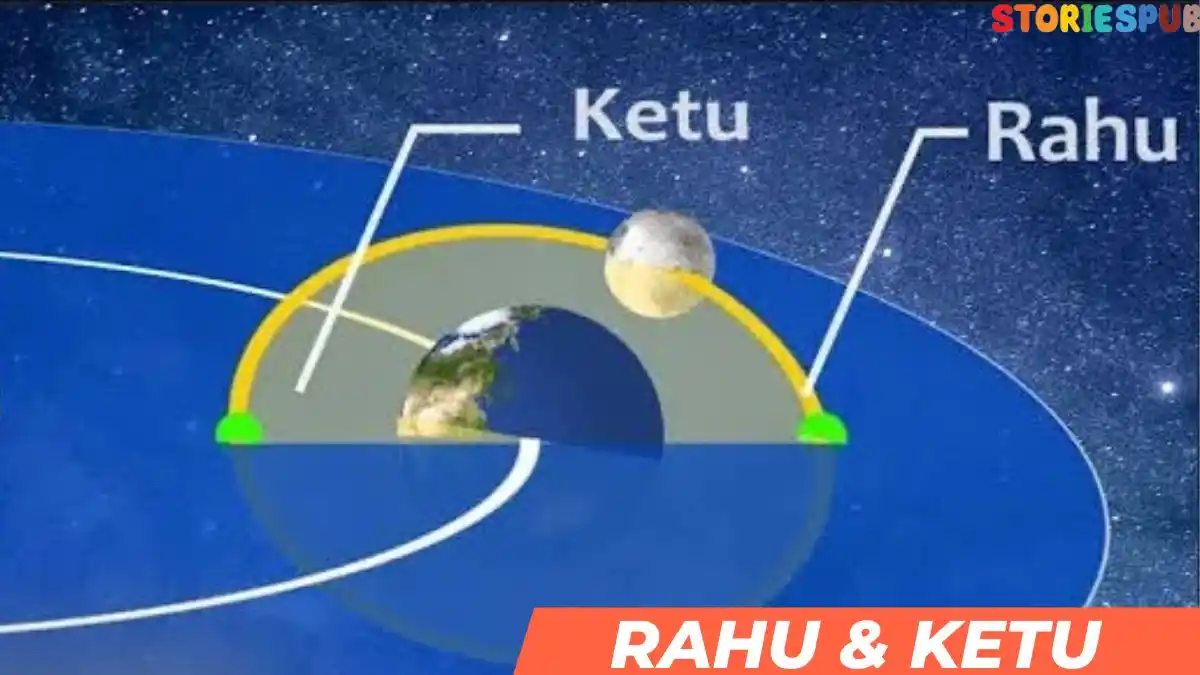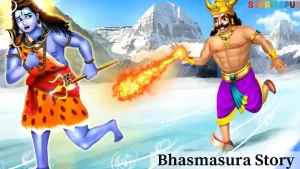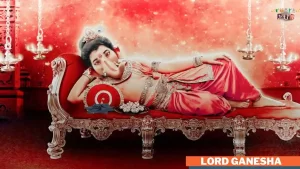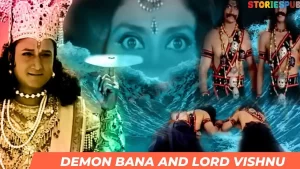Rahu & Ketu: Shadow Planets’ Tale of Power, Cunning & Immortality
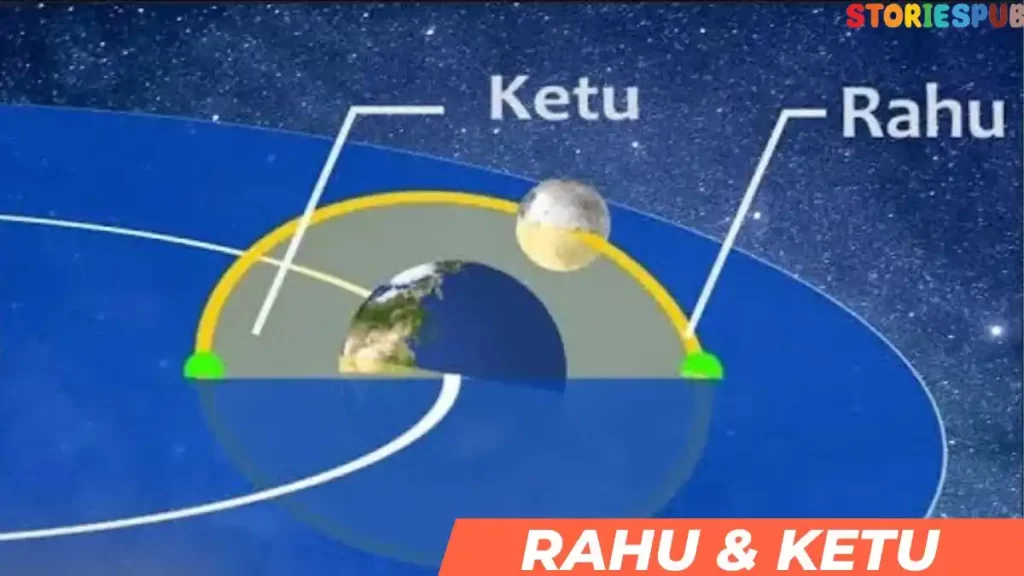
Long, long ago, in the ancient world of Hindu mythology, there lived two unique and powerful entities known as Rahu and Ketu. Their origins are rooted in the cosmic event called the Churning of the Ocean, a collaborative effort between the gods and demons to obtain the nectar of immortality, Amrita.
The family background of Rahu and Ketu began with a demon named Svarbhanu. The son of Simhika and Vipracitti, Svarbhanu came from a lineage of demons well-versed in the dark arts. It was this heritage that would ultimately shape the destinies of Rahu and Ketu and their transformation into the feared shadow planets.
As the gods and demons churned the vast ocean using Mount Mandara as the churning rod and the serpent Vasuki as the rope, various celestial beings and treasures emerged from the ocean depths. One of these divine treasures was the Amrita, the elixir of immortality. However, the gods, seeking to keep the nectar for themselves, devised a plan to trick the demons.
Lord Vishnu assumed the enchanting form of Mohini and offered to distribute the Amrita among the gods and demons. As she began to distribute the nectar, Svarbhanu disguised himself as a god and managed to partake in the divine nectar. As he sipped the Amrita, the Sun and Moon detected the imposter and alerted Lord Vishnu.
Furious at Svarbhanu’s deception, Lord Vishnu severed the demon’s head from his body with his Sudarshana Chakra. However, since Svarbhanu had consumed a drop of the Amrita, he could not be killed. Thus, the severed head became Rahu, and the headless body transformed into Ketu. It was through this transformation that Rahu and Ketu became demons.
Rahu and Ketu have distinct physical features. Rahu, the disembodied head of Svarbhanu, is depicted with sharp fangs and an insatiable hunger. Conversely, Ketu is represented as a serpentine creature with a headless body, often portrayed with the lower half of a serpent.
Their role in the Churning of the Ocean myth signifies the delicate balance between creation and destruction and the potential consequences of deception and ambition. As immortal beings born from Svarbhanu’s treachery, they would forever be at odds with the celestial bodies that exposed them.
Although Lord Vishnu had defeated Svarbhanu and created Rahu and Ketu, their newfound immortality granted them the power to exact revenge on the Sun and Moon. In Hindu mythology, it is believed that Rahu and Ketu swallow the Sun and Moon periodically, causing solar and lunar eclipses. In response, Lord Vishnu intervenes to save the celestial bodies and restore balance to the cosmos.
Rahu and Ketu’s relationship with the Sun and Moon is one of eternal enmity. The eclipses are seen as their ongoing attempts to avenge the humiliation they suffered during the Churning of the Ocean. However, despite their antagonistic nature, Rahu and Ketu also serve as harbingers of transformation and change, impacting human lives in profound ways.
In Vedic astrology, Rahu and Ketu are considered shadow planets, or grahas, associated with the lunar nodes. Rahu corresponds to the ascending lunar node, while Ketu is linked to the descending lunar node. Their influence on human life is thought to bring both positive and negative changes, representing the duality of existence and the balance of opposing forces.
The significance of Rahu and Ketu in Hinduism extends beyond their association with eclipses, astrology, and their role in the Churning of the Ocean myth. They embody the concept of duality and the eternal struggle between light and darkness, symbolizing the interconnectedness of opposing forces within the cosmos.
Across India, several temples are dedicated to Rahu and Ketu, where devotees pay their respects and seek their blessings. One such temple is the Sri Kalahasti Temple in Andhra Pradesh, where Rahu and Ketu are believed to have been worshiped for centuries. Another famous temple is the Naganathaswamy Temple in Tamil Nadu, which is dedicated specifically to Rahu.
In summary, the story of Rahu and Ketu is a tale of ambition, transformation, and the balance of opposing forces in the universe. Born from the treachery of Svarbhanu, Rahu and Ketu would go on to become powerful shadow planets, playing a significant role in Hindu mythology and astrology. Their ongoing struggle with the Sun and Moon serves as a constant reminder of the eternal struggle between light and darkness, and the profound impact these celestial entities have on human life.
Rahu & Ketu FAQ
How were Rahu and Ketu born?
Rahu and Ketu were born to the powerful demon couple, Svarbhanu and Simhika. Rahu had a massive head and a serpent's tail, while Ketu was headless with a long, serpentine body.
What is the significance of Rahu and Ketu in astrology?
In astrology, Rahu and Ketu are considered shadow planets, affecting a person's life in various aspects. Rahu is associated with ambition, desire, and materialism, while Ketu represents spiritual growth, detachment, and enlightenment.
How did Rahu become immortal?
Rahu became immortal after he disguised himself as a god and managed to drink some of the elixir of immortality during the churning of the ocean. However, Lord Vishnu decapitated Rahu before he could swallow it completely, making only his head immortal.
What is the story of Rahu and Ketu's relationship with the moon?
Rahu and Ketu's relationship with the moon is related to the churning of the ocean. The moon and the sun recognized Rahu's deception when he tried to steal the elixir of immortality and alerted Lord Vishnu. Rahu's head, now immortal, devours the sun or moon during solar and lunar eclipses, symbolizing Rahu's revenge.
How did Rahu and Ketu die?
Rahu and Ketu were tricked by Lord Vishnu into drinking a poisonous concoction called Halahala, which ultimately killed them. Their spirits, however, continue to influence human lives through astrology and mythology.
What are the most famous temples dedicated to Rahu and Ketu?
Some famous temples dedicated to Rahu and Ketu include the Rahu Temple in Tamil Nadu, the Ketu Temple in Kerala, and the Navagraha Temple in Assam
What role do Rahu and Ketu play in eclipses?
Rahu and Ketu are associated with causing eclipses in Hindu mythology. Rahu is believed to devour the sun or moon during a solar or lunar eclipse, while Ketu is responsible for releasing them.
What are the effects of Rahu and Ketu in a person's horoscope?
In a horoscope, Rahu and Ketu's placement can signify various life experiences, opportunities, and challenges. Rahu may bring material gains, ambitions, and sudden changes, while Ketu represents spiritual growth, detachment, and past life connections.
How can one appease Rahu and Ketu?
Rahu and Ketu can be appeased through prayer, meditation, and the performance of specific rituals or remedies prescribed by an experienced astrologer. Visiting temples dedicated to Rahu and Ketu and seeking their blessings can also be beneficial in mitigating their effects.
Hey kids, how much did you like The Rahu & Ketu: Shadow Planets’ Tale of Power, Cunning & Immortality? Please share your view in the comment box. Also, please share this story with your friends on social media so they can also enjoy it, and for more such Hindu Mythology, , please bookmark storiespub.com.
Check out other stories that we have:


